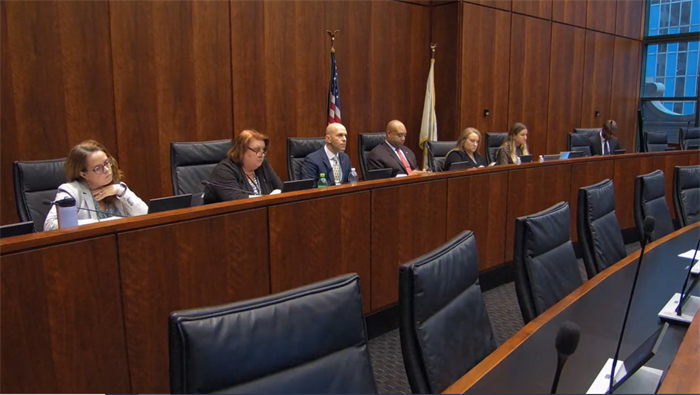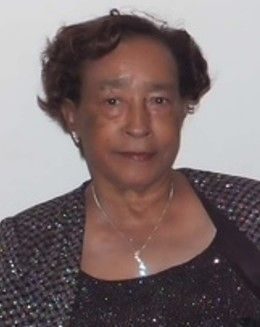Lawmakers hear more pleas for assault weapon ban; experts say gun control only one part of bigger puzzle

SPRINGFIELD – A legislative committee on Thursday heard more witnesses call for a ban on high-power, semi-automatic rifles and large-capacity magazines, but some experts said that alone won’t solve the problem of violent crime in Illinois.
During its second hearing on a proposed assault weapon ban, an Illinois House committee, meeting in Chicago, heard from several officials who said public investment in marginalized communities and community-based programs that aim to stop cycles of violence also are needed.
“Unfortunately, community-based providers serving at-risk youth and emerging adults have lacked substantial investments for decades. Yet these programs have proven to be impactful and effective,” Delrice Adams, executive director of the Illinois Criminal Justice Information Authority, told the panel. “Community investment, diversionary criminal justice programming and evidence-based, trauma-informed treatment can reduce crimes related to illegal gun carrying. A deliberate investment must continue to be part of the gun violence prevention conversation.”
Adams spoke during a House Judiciary-Criminal Committee hearing on House Bill 5855, sponsored by Rep. Bob Morgan, D-Deerfield. It would ban the sale and possession of “assault weapons,” .50 caliber rifles, .50 caliber cartridges and high-capacity magazines. The bill provides a long list of firearms, both rifles and pistols, that would fall under the definition of “assault weapons.”
And starting 300 days after the bill takes effect, it would make it illegal to possess such a weapon or ammunition unless it is registered with the Illinois State Police.
Kim Smith, director of programs at the University of Chicago Crime Lab, called gun violence a “public health crisis” in the United States, noting that its homicide rate is at least 7.5 times that of other industrialized nations and that guns account for 79 percent of those homicides.
“Here in Chicago, fully three quarters of shootings stem from an altercation that happens to take place within a reach of a gun,” she said. “One way to reduce gun violence is therefore to make the situations in which those arguments occur more forgiving. The best way to do that is to limit the widespread availability of illegal guns, particularly those equipped with high-capacity magazines. Without the presence of a gun, altercations would still happen, but they would be far less likely to result in death.”
But Smith said other actions are needed as well, including investments in social service programs that help people “de-escalate stressful situations before they lead to violence.”
One of the programs recently put into place in Illinois that aims to make those investments is the 2021 Reimagine Public Safety Act, administered by the Office of Firearm Violence Prevention within the Illinois Department of Human Services, which provides grants to organizations for violence prevention programs in 42 target communities both within and outside Chicago that have seen the highest rates of gun violence and homicides.
Chris Patterson, the assistant secretary who oversees that office, said some of the communities receiving those grants are already seeing dramatic declines in violent crime. But he argued that banning assault weapons is still a necessary step.
“Something for us to consider is, what kind of commonsense society are we creating for our children now that gun violence is the leading cause of their death,” he said. “Let’s help our communities that are trying so hard to help themselves by banning the weapons of mass destruction we loosely call assault weapons from the streets of this great state.”
The panel also heard from people directly affected by gun violence, including Maria Pike, a volunteer with the group Moms Demand Action, whose 24-year-old son was shot and killed in 2012 in Chicago’s Logan Square neighborhood.
“He was shot while trying to park in front of his new apartment,” she said. “And that’s when my struggle began, because I wanted to understand why someone who didn’t know my son (shot) him multiple times. I don’t even know at this time how many bullets went through.”
That incident occurred just four months before the mass shooting at Sandy Hook Elementary School in Newtown, Connecticut.
The committee also heard from Marsha Lee, whose son was killed in 2008 in Harvey, Illinois.
“It’s been 14 years since my son has been killed and we still are here doing the same work, having the same conversation,” she said. “It’s a no-brainer to me. I don’t understand why we have to fight the NRA and others to have commonsense reform.”
But the committee also heard from opponents of the bill, including Andrew Guadarrama, a 26-year-old Chicago resident who said the proposed law could actually endanger public safety because many residents, including those in high-crime neighborhoods, cannot rely on the police to protect them.
“Living in a lower income area of the city, I’ve heard gunshots many times. I’ve had guns waved at me,” he said. “When I try relying on law enforcement to protect me, every time it’s failed. Three instances I called the police to report gunshots outside of my home. Those three instances, police did not show up.”
The committee is scheduled to hold at least one more public hearing on Dec. 20 in Chicago. Lawmakers are expected to debate and possibly take action on the bill when they meet for a lame duck session starting Jan. 4.
Miss Clipping Out Stories to Save for Later?
Click the Purchase Story button below to order a print of this story. We will print it for you on matte photo paper to keep forever.

